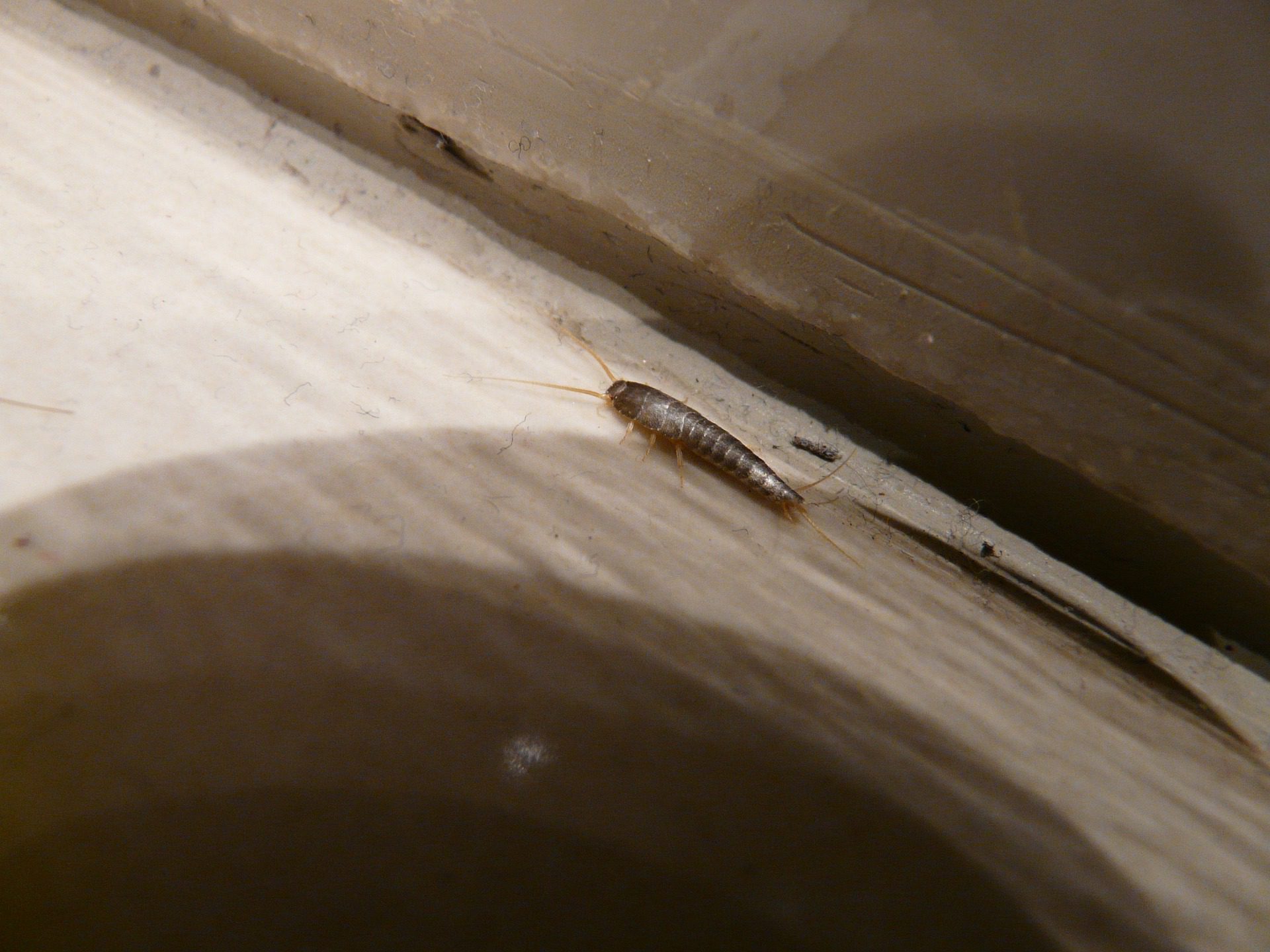

Silverfish are the nuisance pest from some people’s nightmares. Where there’s one, it seems like there are a hundred- because there probably are. These rapidly-multiplying pests are not all bad, though. Here are some fun facts about silverfish that might help to make them a little less nightmarish.
Silverfish Are Speedy
When it comes to fight or flight, silverfish will always choose flight. They don’t have fangs and they aren’t poisonous. Plus, they wiggle when they run making them look like tiny swimming fish- not very intimidating to predators. The one thing they do have on their side is speed. With their many legs and wiggly bodies, they can dart to the nearest dark corner in what seems like the blink of an eye. This allows them to outrun predators easily, even agile hunters like spiders and centipedes.
Silverfish Are Nimble
In addition to being fast, silverfish can squeeze through the tiniest of gaps to get into any room they please, and they can jump an astounding 2 feet vertically! They can also climb vertical surfaces like walls, though their vertical speed is not nearly as extreme as their horizontal speeds. They can climb just about any surface except a shiny smooth one, so once they are in a tub or sink, they are there to stay. These insects really give a whole new meaning to the phrase “everything but the kitchen sink.”
Silverfish Live Long Lives
A typical silverfish lifespan is between 3 and 6 years, but some live as long as 8 years. In the insect world, that is a remarkably long time. Most insects only live for around a year.
Silverfish Are Not Picky Eaters
Silverfish will eat just about anything that gives them the carbohydrates they need. This includes glue, paper products, toothpaste, fabrics, carb-heavy foods like cereal, shampoo or soap residue, and more. They even eat dead or injured insects, including other silverfish! Not that they always need to, though- silverfish can live for up to a year without eating, as long as they have water.
Silverfish Perform A Mating Dance
Silverfish may take anywhere from a few months to 2 years to reach adulthood. Once they do, they find a mate and perform their mating dance. First, they touch their antennae together and then retreat. After repeating this step a few times, the female runs away and the male chases. Once they reunite, they mate and the female can then lay between 1 and 20 eggs up to three times a day for the rest of her life. Needless to say, a few too many mating dances can turn into an infestation very quickly.
Silverfish Shed A Lot
Most insects shed their exoskeletons as they grow, and their final molt is the one that brings them into adulthood. Silverfish, however, continue molting well into their adult life. This means that their exoskeletons can start piling up very quickly. Their exoskeletons are metallic silver in color and are so thin that they appear almost opaque. They stick to all sorts of surfaces and are a strong indication of an infestation.
Silverfish Have Poor Eyesight
Silverfish are equipped with a pair of antennae and three bristled, tail-like appendages, which is the reason they are also sometimes called “bristletails.” They use their antennae and tails to feel around their environment. They would quite literally be lost without these appendages because their eyes are microscopic in size and do not allow for much sight. Some species are completely blind.
Silverfish Are Ancient
Silverfish are one of the oldest living insects on the planet. In fact, they were around 100 million years before the dinosaurs even existed- that means that silverfish are more than 400 million years old!
Silverfish Are Persistent
The downside to the silverfish’s ancient history is that they have had time to develop a tolerance to many insecticides. As such, they can be very hard to exterminate. Not to worry, though. Excel knows exactly what it takes to get rid of these wiggly insects, so if you have a silverfish problem, give us a call today or visit our silverfish removal and control page.
FAQs
Can Silverfish jump?
No, silverfish cannot jump. They move in a wriggling, fish-like manner using their legs to scurry quickly across surfaces.
Do Silverfish fly?
No, silverfish do not fly. They lack wings and rely on their rapid, slithering movement to escape predators.






